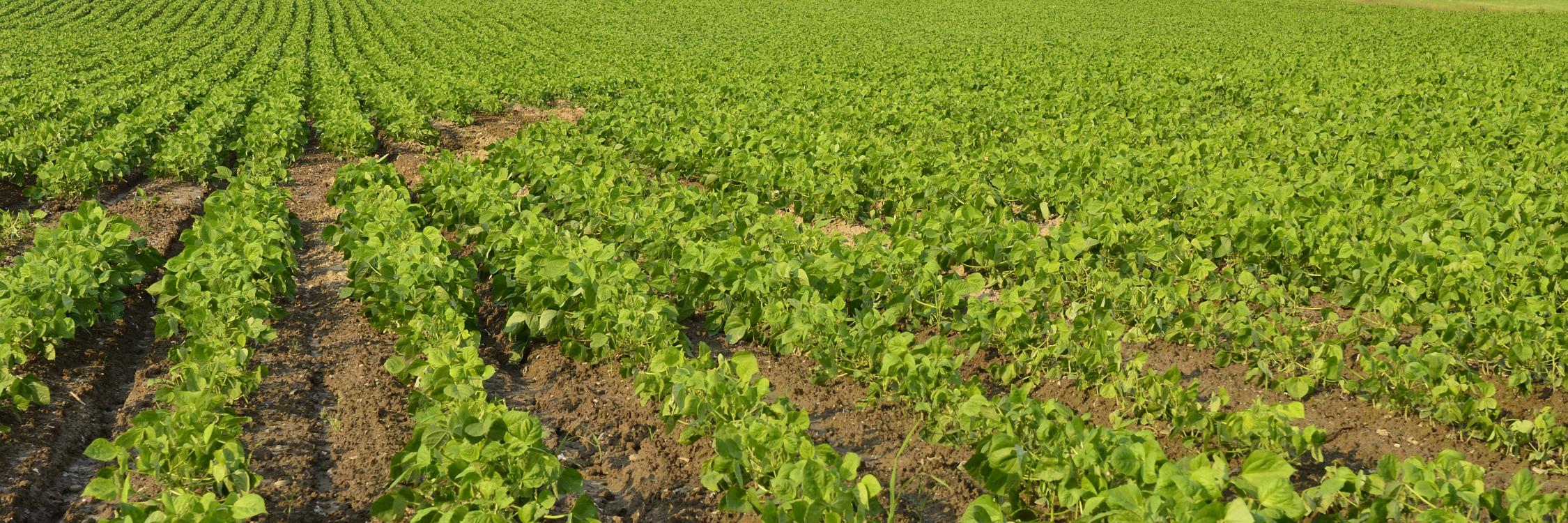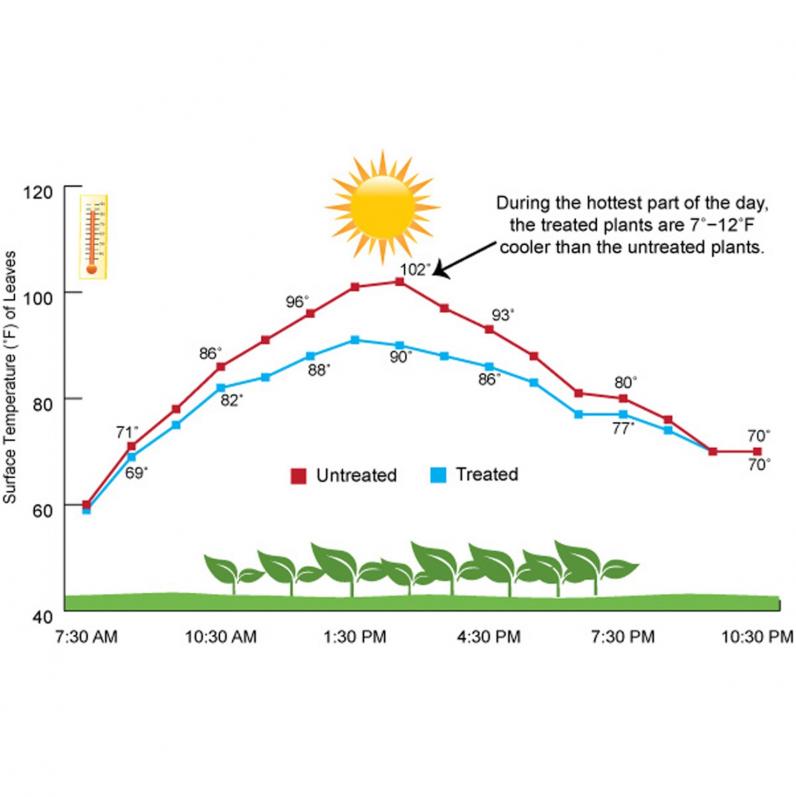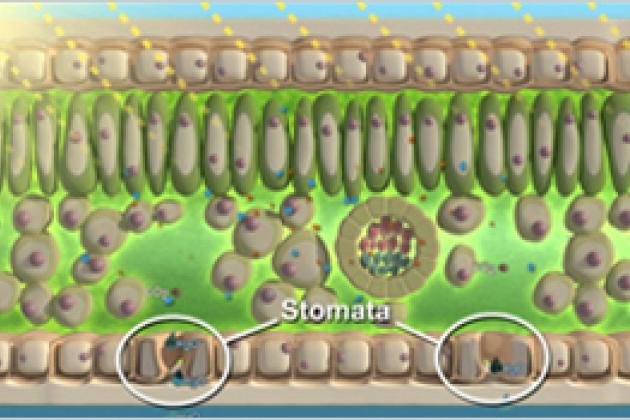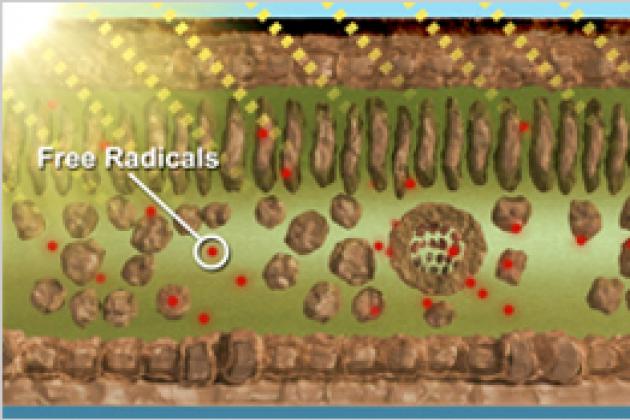
Plant Health Insights

Periods of excessive heat and sunlight during critical stages of growth can negatively impact crop quality and overall yields. When ultraviolet (UV) and infrared (IR) light levels rise, and temperatures go beyond a plants optimum, heat-stressed plants will wilt, their stomata close and photosynthetic processes stop. When this happens, light energy, which under cooler conditions is used productively by the plant to turn carbon dioxide into carbohydrates, is instead wasted and can even cause the development of free radicals that damage plant cells.
Surround® Crop Protectant and Purshade® Solar Protectant coat plant surfaces with a protective film that reflects light and heat. This protection helps plants remain as much as 12°F cooler and on a hot day, allows photosynthesis to continue longer.
The net benefit of using SURROUND and PURSHADE during periods of heat stress and intense light radiation is that more carbohydrates are available to be stored in the fruit and to build healthy plant structures, and less energy is needed to maintain and repair the damage caused by extreme heat. This benefit also can be measured in terms of more vigorous plant performance, increased crop yields and higher quality produce.
Benefits for Using Solar Protection
- Reduce heat stress by keeping plants 7°–12°F cooler
- Prolong photosynthesis during periods of high heat
- Help prevent the development of damaging free radicals
- Improve overall plant health
-

Plants at Optimum Temperature
Carbon dioxide enters the leaves through stomata. The plant manufactures carbohydrates (sugars) through photosynthesis to give the plant the energy it needs to grow and be productive.
-

Plants at Extreme High Temperature
Research suggests that a combination of heat stress and light intensity can cause stomata to close and create the development of free radicals that are damaging to the plant’s cells.